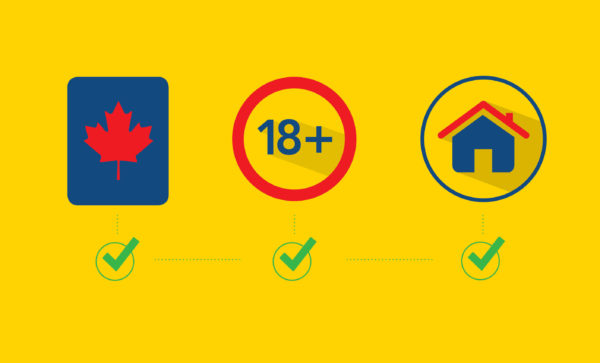So you want to vote in the federal election on Oct. 19? That’s great, because I want you to vote, too.
According to Stats Canada, our age groups (as students) had the lowest voter turnout rate in the last federal election: only 38.8 per cent of 18–24 year-olds took part, followed by only 45.1 per cent of 25–34 year-olds. To me, that says that a lot of our views and values are not being represented in national politics.
That needs to change. I want the issues that are discussed, the legislation that’s moved forward, and the laws that are updated to reflect our ideas for the future, whether they have to do with addressing the rising costs of education, figuring out Canada’s role in addressing climate change, or decriminalizing (or legalizing) marijuana.
The nuts and bolts of voting
As students, the most important thing we need to do is to get prepared and know our options in advance of the election. If you are a first-time voter, it’s a good idea to register to vote before election day. You can do that at ereg.elections.ca.
In order to register to vote, you need three things:
- To be a Canadian citizen
- To be 18 or older as of Oct. 19, 2015 (yes, you can vote on your birthday if you want, you lucky duck!)
- To have an address in Canada that you’re registered at.
(Note: If you have friends that are studying or travelling abroad for a semester, they can still vote, but they need to get on organizing their mail ballot ASAP! Refer them to Elections Canada’s website.)
If you are not sure what address you’re registered at, you can check and update it at Elections Canada’s website.
As students, we can have two addresses: our home address (whether that’s in Carrot River, S.K., or Howley, N.L.), or our student address in the city we’re studying. We can vote in either of those ridings, but only one of them — not both.
The ID requirements to vote are as follows: you need to show two pieces of information at the poll, telling the poll officers who you are and where you live. This can be done with one piece of ID that has both components on it, such as a driver’s licence or territorial ID, or you can have two separate pieces of ID that do the job as well: say, your Canadian passport and utility bill, or a birth certificate and credit card statement. Elections Canada has a long list of possible acceptable IDs and combinations on their website at elections.ca.
BTW: I know we just explained all of this in a few paragraphs above, but Vote Note, an app developed by Concordia student Matthew Heuman, was designed to help you find out your riding, the candidates you can vote for, what ID you need, how to get to your riding, and where your polling station is. They have a separate page of resources (from Elections Canada) specifically for students, too. If you’re a first-time voter, trying Vote Note (which is free) is a great way to make voting very easy.
Where to vote
For the first time ever, UVic will have a temporary Elections Canada office open on campus between Oct. 5–8, where you can register, vote, and get information. That office will be located in the SUB Upper Lounge, and open from 10 a.m. – 8 p.m. on those days. Regardless of what address you’re registered at, you can vote there.
If you want to vote on Election Day, Oct. 19, at a polling station, then that’s swell, too. Register to vote now, so that you will have smooth sailing on election day.
Now, if you’re a go-getter, dislike waiting in lines, and want to get voting done, you could visit the Elections Canada office today to cast your ballot. They’re located at 722 Johnson Street. Your vote will be cast by special ballot, and you can vote for whichever address you have ID registered at (if your driver’s licence shows your home address in Carrot River, then your vote will be counted towards to that riding). So if you need to change an address, the sooner, the better. Since nominations are still officially open until the end of September, you’ll want to write down the name of the candidate you’ve chosen; you’ll be writing it onto your ballot.
So now that you know the basics of how to vote, there are also many non-partisan resources online that have popped up in case you don’t know who you want to vote for yet.
Always popular is Vote Compass, an online quiz that asks you to rank how much you agree or disagree with a series of statements, and then shows you how your views line up with the five major federal parties in the running for this election (NDP, Liberal, Conservative, Greens, and Bloq Quebecois).
At the VicVotes 2015 Candidates Forum on Sept. 9, Kevin Ehman, one of the lead organizers for the event, gave me this answer when I asked about why it’s important for people our age to vote: “Young people need to develop patterns of voting while they’re young, because if that doesn’t happen, we have an entire generation of disengaged, and disenfranchised voters, and that doesn’t bode well for our future. So I’d really encourage everybody to get out and be part of the process now, and not later.”









